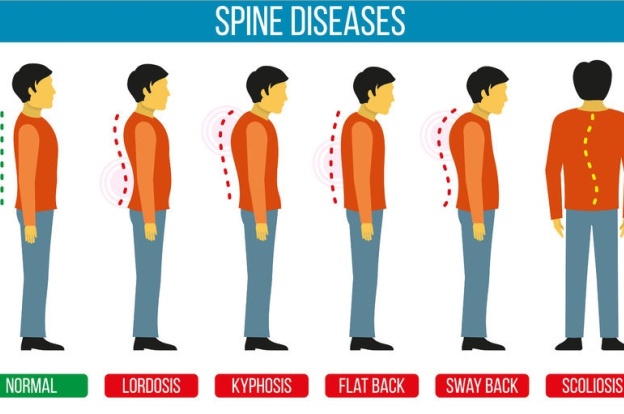Types and causes of spine curvature disorders
Apr 19, 2022
The backbone or spine, is made up with small bones known as vertebrae stacked along with discs 1 on top of the other. The side view of a healthy spine shows gentle curves in it. These curves assist our spine absorb the stress generated by the movement of our body & gravity.

The back view of a healthy spine shows that it runs straight down through the mid of the back. With any abnormality in the spine, the natural curvatures of the spine gets aggravated or misaligned in some parts as they occur with lordosis, scoliosis & kyphosis.
Types of spine curvature disorders
Lordosis– This is also known as swayback. The spine of an individual having lordosis curves inward significantly at lower back
Scoliosis– An individual with scoliosis has a curve sideways to the spine. This curve is often C-shaped or S-shaped.
Kyphosis– Kyphosis is featured by an abnormal round upper back. i.e. over 50 degrees curvature.
Causes of spine curvature disorders
Following conditions may lead to lordosis:-
- Achondroplasia– It is a disorder wherein bones do not grow normally, hence leading to short stature linked to dwarfism
- Spondylolisthesis– It is a condition wherein vertebrae slips forward, usually at the lower back.
- Osteoporosis– It is a condition wherein vertebrae gets weakened and could easily get broken. i.e. compression fractures
- Obesity or becoming extremely overweight
- Kyphosis– It is a condition that is marked by abnormally round upper back
- Discitis– It is the inflammation of disc gap between the bones of our spine, mostly caused due to infection
- Benign or harmless juvenile lordosis
Following conditions may lead to kyphosis:-
- Abnormal development of vertebrae in utero, known as congenital kyphosis.
- Slouching or bad posture , also known as Postural kyphosis
- Arthritis
- Scheuermann’s disease, which is a condition that leads vertebrae to get misshaped.
- Osteoporosis
- Spine infections
- Spina bifida- It is a birth defect wherein which spinal column of a foetus does not completely close during its growth in the womb
- Spine tumors
It is yet not known as to what leads to the most common kind of scoliosis in adolescents. However, it is known that scoliosis has a tendency to run in families. An injury, disease, birth defect or infection may also be the reason.









